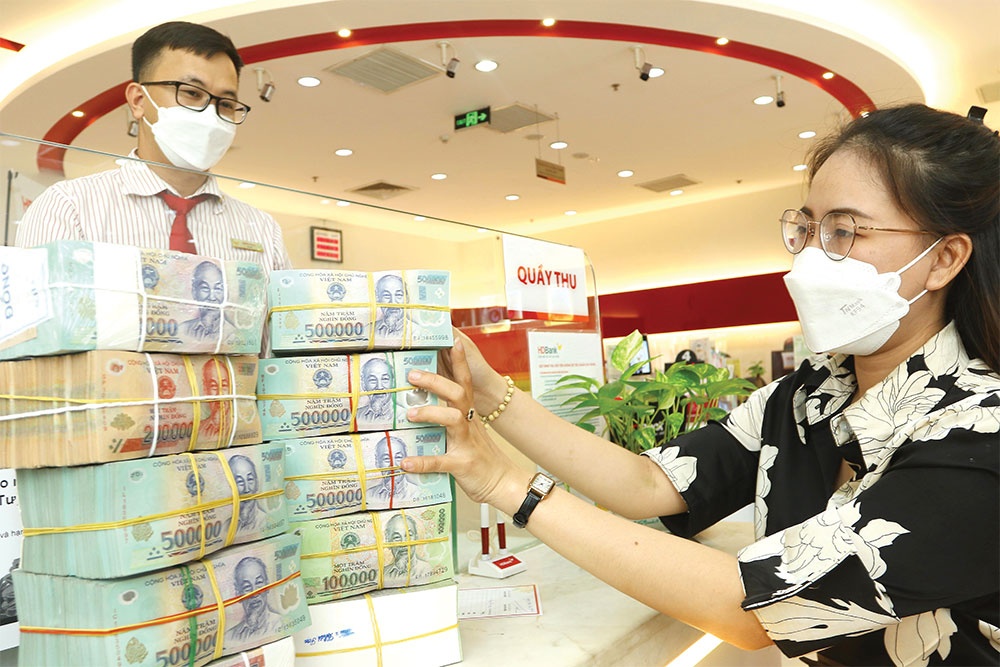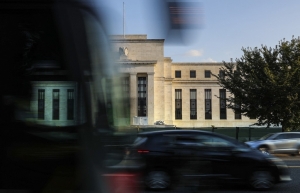Central banks brace after new Fed move
The US Federal Reserve last week announced its fresh interest rates hike by 0.75 percentage points following its latest meeting, bumping the federal funds rate to a target range of 3.75-4 per cent. This comes as the central bank is swiftly reducing the amount of liquidity it provides to the financial markets in an effort to assist bring down excessive inflation.
 |
| The State Bank of Vietnam may have to sell a large amount of foreign currency to keep prices stable |
Fed chairman Jerome Powell, during last week’s press briefing, indicated that the institution discussed slowing the pace of rate hikes but did not commit to it. He expects the Fed would then raise interest rates by a half percentage point in December.
On the other hand, some policymakers are anticipated to call a halt to any further increases in interest rates at some point in 2023. Nevertheless, it is probable that they will continue to be maintained at a quite high level for some years.
The Fed continues to keep its holdings of Treasury notes and bonds as part of a broader effort to counteract the negative impact of the economic turmoil.
Elsewhere, other nations such as Australia, the UK, and Norway also followed suit by raising interest rates, indicating that central banks continue to tighten monetary policy in an effort to control inflation.
Economist Vu Dinh Anh told VIR that the underlying message from the Fed chairman is that future rate hikes will be reduced to 0.25 percentage points or less.
“Accordingly, interest rates in VND must also tend to climb in response to the Fed’s rate hike. And the hike would exert large influence on Vietnam’s exchange rate policy,” Anh said.
Currently, almost every other currency in the world is depreciating against the USD, putting immense downward pressure on the VND. If the VND does not decline, the country’s export competitiveness would suffer. Since exporting activities are a vital component of Vietnam’s wealth, this will have serious consequences, Anh said.
He also noted that the State Bank of Vietnam (SBV) has to sell a large amount of foreign currency to interfere in the market and keep prices stable.
Core inflation, which excludes variables directly influenced by the currency, is still quite low, thus the possibility of substantial inflation this year in Vietnam is almost gone. Anh said that although managing inflation has become easier, it is still a higher priority than promoting growth.
“Vietnam’s core inflation, which excludes variables directly impacted by the currency fluctuations, is still quite low; hence the country is unlikely to see substantial inflation this year. However, controlling inflation is still a primary task rather than supporting growth,” he explained.
Reiterating the importance of the central bank’s monetary policy management, Deputy Governor of the SBV Pham Thanh Ha emphasised that inflation control and the macroeconomic stability are priorities.
“We are making concrete efforts to ensure liquidity for the entire system. Moreover, the SBV is paying special attention to stabilise the three most telling metrics in the monetary sector – interest rates, exchange rates, and credit expansion. The SBV will safeguard financial institutions in Vietnam, as well as other capital mobilisation channels,” he said.
Ha also highlighted that monetary policy management of local authorities monetary policy management is consistent with domestic and international macroeconomic climate. As a result, the local currency and foreign exchange markets will inevitably feel the effects of global economic conditions.
Krishna Srinivasan, director of the Asia-Pacific Department at the International Monetary Fund, said, “Vietnam’s upbeat growth outlook is bucking the slowing trend elsewhere in Asia. Given robust growth through September, we revised up our 2022 growth forecast by a full percentage point to 7 per cent, and we cannot rule out even stronger growth.”
Inflation, he predicted, is expected to edge up before gradually returning below 4 per cent. Risks to growth are to the downside, and risks to inflation are to the upside.
“Policies must be carefully calibrated, coordinated, and communicated to manage risks and alleviate policy trade-offs. In the current context, monetary policy should focus squarely on price stability,” he noted.
“A tighter policy stance should be considered if inflation pressures intensify and safeguarding financial stability remains a priority. Fiscal policies should remain flexible and be more targeted if inflation pressures build up.”
| The Vietnamese currency has depreciated roughly 8 per cent in the year-to-date against the USD, with October seeing a substantial rise in realised volatility. In addition, mounting inflation pressures have spurred the SBV to act boldly. Effective October 25, the SBV raised its discount and refinancing rate by 100 basis points (bps) to 4.5 per cent and 6 per cent respectively. Other rates were also increased: the overnight electronic interbank rate was raised by 100 bps to 7 per cent and the cap on VND deposit rates at commercial banks by 50 bps to 1 per cent, depending on maturities. The SBV noted the US Fed’s hikes and the strength of the dollar, highlighting the continued pressures facing Asian central banks. Earlier in October, the SBV widened the trading band from ±3 per cent to ±5 per cent, reducing some pressure on the use of reserves, which as of August have fallen by 16 per cent since the peak in January. In light of the rising risks to the SBV’s mandate, it has notably adopted a more proactive stance in maintaining macroeconomic stability and dampening imported inflation. There are reports of discussions on possibly widening the trading band again, indicating that the hiking cycle is still under way. HSBC expects the SBV to raise the refinancing rate by 50 bps in the first two quarters of 2023, taking the policy rate to 7 per cent by mid-2023. Source: HSBC |
 | US Fed starts policy meeting with further rate hike expected US central bankers started their two-day policy meeting Tuesday with persistently high inflation backing expectations of another rate hike -- a fourth straight steep increase as price pressures fail to ease quickly enough. |
 | Keeping monetary stability-core task in face of FED interest rate hikes Amid the US Federal Reserve (FED)’s continuous increases of interest rates to cope with inflation, the most important task for Vietnam now is to keep macro-economic stability, with monetary stability being the core, some economic experts have said. |
What the stars mean:
★ Poor ★ ★ Promising ★★★ Good ★★★★ Very good ★★★★★ Exceptional
Related Contents
Latest News
More News
- Gold market reform advances as SBV receives applications for bullion production (December 30, 2025 | 12:07)
- EVN and AFD sign credit agreement for Vietnam’s first pumped storage hydropower plant (December 30, 2025 | 10:06)
- Techcombank Priority Visa Signature unlocks a higher standard of living (December 29, 2025 | 16:44)
- Tax sector wraps up 2025 and sets priorities for next year (December 25, 2025 | 14:00)
- A tipping point for digital and hybrid wealth management in Vietnam (December 23, 2025 | 13:33)
- $250 million deal targets women-owned SMEs, sustainable agriculture (December 22, 2025 | 17:40)
- Stock market posts resilient 2025 performance (December 19, 2025 | 18:17)
- Citi Vietnam receives 2025 AmCham CSR recognition (December 19, 2025 | 16:35)
- As global green supply chain reshapes, will Vietnam be left behind? (December 19, 2025 | 08:00)
- Banks gear up for massive capital increases (December 18, 2025 | 17:04)

 Tag:
Tag:





















 Mobile Version
Mobile Version